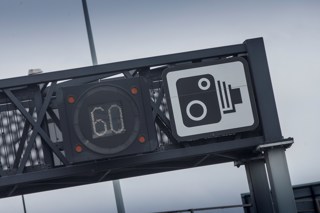The Government has recommended wearing a face ‘covering’ when in an enclosed space where social distancing is not possible.
Examples given include short periods indoors in crowded areas, such as when using public transport or visiting some shops.
The new guidance, published today (Monday, May 11), also stresses that a face covering is not the same as the surgical masks or respirators used by healthcare and other workers as part of personal protective equipment (PPE).
These, it says, should continue to be reserved for those who need them to protect against risks in their workplace, such as health and care workers, and those in industrial settings, like those exposed to dust hazards.
Evidence suggests that wearing a face covering does not protect you. However, if you are infected but have not yet developed symptoms, it may provide some protection for others you come into close contact with, says the advice.
The advice adds that face coverings should not be used by children under the age of two or those who may find it difficult to manage them correctly. For example, primary age children unassisted, or those with respiratory conditions. The Government has also issued advice on making your own facemask.
The face covering guidance comes as the Government released details on the lifting of lockdown restrictions in its coronavirus recovery strategy.
THREE-STEP ROADMAP
They include recommendations around how employees should travel to work and guidance for employers about how to manage workspaces, which are outlined in a three-step process that will progress according to the transmission rate of the infection.
Step one, which becomes effective from Wednesday (May 13), says all workers who cannot work from home should travel to work if their workplace is open.
Sectors of the economy that are allowed to be open should be open, it says, this includes food production, construction, manufacturing, logistics, distribution and scientific research in laboratories.
The only exceptions to this are those workplaces such as hospitality and non-essential retail, which during this first step the Government is requiring to remain closed.
To reduce demand on the public transport network, the guidance says that people travelling to and from work should walk or cycle wherever possible. However, it says if an alternative to public transport is not possible, they should try to avoid peak times.
Employers should also consider staggering working hours, expanding bicycle storage facilities, providing changing facilities and providing car parking.
The Government announced a £2 billion package over the weekend to encourage people to walk and cycle to work.
Employers have also been issued guidance on how they can re-open workspaces, adhering to the new workplace social distancing rules.
INTERNATIONAL TRAVEL
This first step also outlines how the Government will introduce a series of measures and restrictions at the UK border to keep the overall number of transmissions in the UK as low as possible.
First, alongside increased information about the UK’s social distancing regime at the border, the Government will require all international arrivals to supply their contact and accommodation information.
The advice says that they will also be “strongly advised” to download and use the NHS contact tracing app.
Second, the Government will require all international arrivals not on a short list of exemptions to self-isolate in their accommodation for fourteen days on arrival into the UK.
Where international travellers are unable to demonstrate where they would self-isolate, they will be required to do so in accommodation arranged by the Government.
The Government says it is working closely with the devolved administrations to coordinate implementation across the UK.
Small exemptions to these measures will be in place so as not to impede work supporting national security or critical infrastructure, and to meet the UK’s international obligations.
All journeys within the Common Travel Area – the UK, Ireland, Isle of Man, Guernsey and Jersey – will also be exempt.
The international travel measures will not come into force on May 13, instead the Government says they will be introduced “as soon as possible”.
Further details, and guidance, will be set out shortly, and the measures and list of exemptions will be kept under regular review, it said.
PHASED RE-OPENING
In terms of which businesses can re-open when, a phased re-opening schedule depending on a controlled rate of infections will see other retail operations open from June 1. Some businesses in the hospitality industry could possibly open in July.
In a statement from the Prime Minister, Boris Johnson, published alongside the coronavirus recovery strategy, he says that “we must acknowledge that life will be different, at least for the foreseeable future”.
He explained: “I must ask the country to be patient with a continued disruption to our normal way of life.
“The worst possible outcome would be a return to the virus being out of control – with the cost to human life, and – through the inevitable re-imposition of severe restrictions – the cost to the economy.
“We must stay alert, control the virus, and in doing so, save lives.”
Citing reports compiled by the Office for Budgetary Responsibility (OBR), the Government’s ‘Recovery’ document warned that if the current measures stay in place until June and are then eased over the next three months, unemployment would rise by more than two million in Q2.
The OBR’s scenario suggests that GDP could also fall by 35% in Q2, adding that the annual contraction could be the largest in more than 300 years.























Login to comment
Comments
No comments have been made yet.